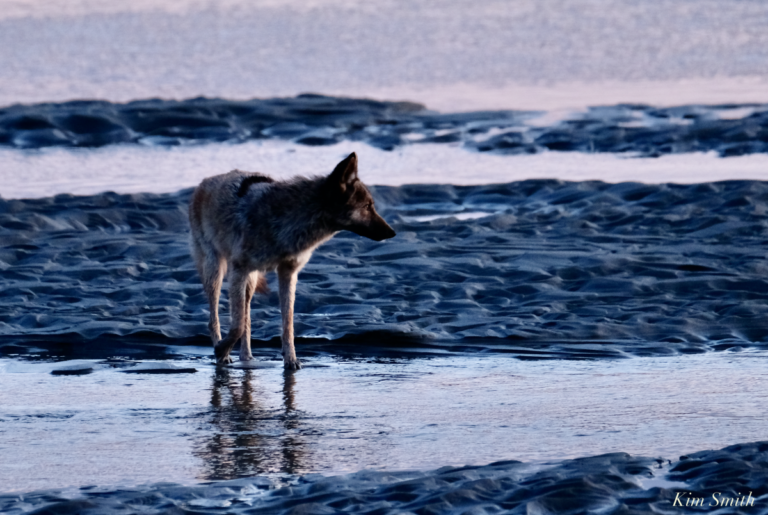Flora and Fauna of the Boston Harbor Islands: Coyotes

When thinking of islands, perhaps one thought that comes to mind is isolation. Isolation can serve many purposes. The Boston Harbor Islands, for example, have been used as quarantine stations for ships coming into Boston, hospitals for contagious diseases and prisoner of war camps. These uses were out of sight, out of mind for people on the mainland, but still closes enough to service and maintain.
Other islands, such as Australia, were so isolated that the flora and fauna developed along their own evolutionary track resulting in plants and animals seen nowhere else in the world. As the Boston Harbor Islands have changed over the years from places with forts and hospitals and prisons to seasonal visitation and scientific research, so the ecosystems have changed. While scientists have discovered unique flora on some of the islands, the animals come from the mainland. The seeds of plants use the wind, the water and boats to travel to the islands. Animals must swim, fly or catch a ride to the islands.
Starting with this issue, we are going to spotlight a plant or animal found on the Boston Harbor Islands. We’ll start with our apex predator, the coyote. Coyotes have certainly adapted to living alongside humans although the reverse may not the case. On the mainland, coyotes are notorious for preying on small pets such as cats and small dogs. In the harborside community of Nahant, the loss of so many pets led them to request from the State, permission to hunt coyotes.
Coyotes are great swimmers and can easily get to the islands. While they are smaller than their cousins, the wolf, they can weight 25-40 pounds and can live up to 21 years of age in captivity but only 6-8 years in the wild. The largest coyotes inhabit the Northeast. Their pups (generally 4-7) are born around May/June. While coyotes do hunt in packs, as a general rule they don’t attack humans. However, there are isolated instances, in most cases when coyotes were fed by humans, that they may become aggressive. They should be observed from a distance and small pets should be kept inside, especially at night. If coming face to face with a coyote, back away slowly and don’t make any sudden moves which could trigger a predator response. Also, never mess with their pups – or the young of any wild animal.
Over the last few years, numerous coyotes have been spotted on islands such as Peddocks, where their howls are distinctive, perhaps triggering some primordial sense in humans of their long-ago ancestors. We aren’t huddled in caves now with only a roaring fire between us and a hungry predator and we have the opportunity to observe our natural habitat while respecting the boundaries of our fellow creature.
So, next time you are camping out on Peddocks, look forward to the mournful cry of the coyote filling the night with their songs.
References
New York Times:: A New England Town Invaded by Coyotes Calls in Sharpshooters: Jenna
Russel: Dec 31, 2022
Mammals of Boston Harbor Islands: L Nolfo Clements, 2018. https://www.jstor.org
February 3, 2021: https://www.facebook.com/bostonharborislands/posts/
The Urban Wild of Thompson Island: https://www.bostonharborbeacon.com